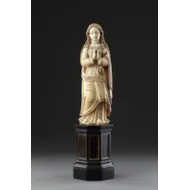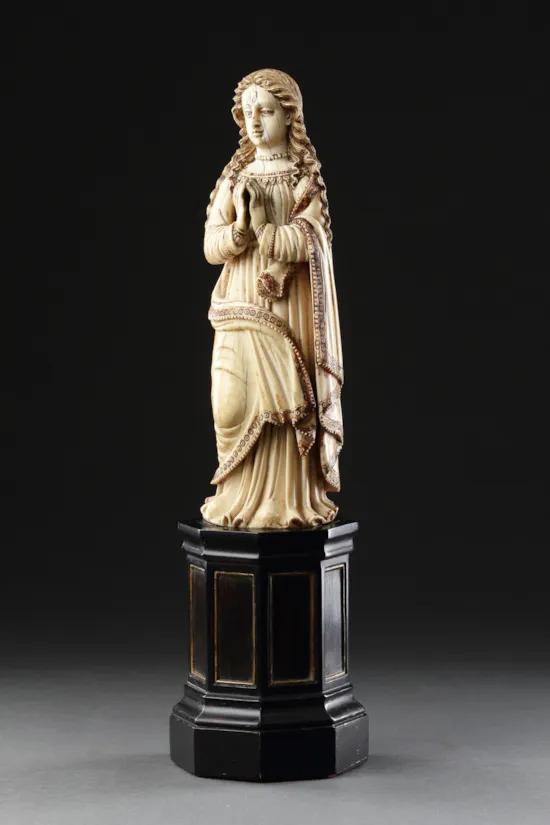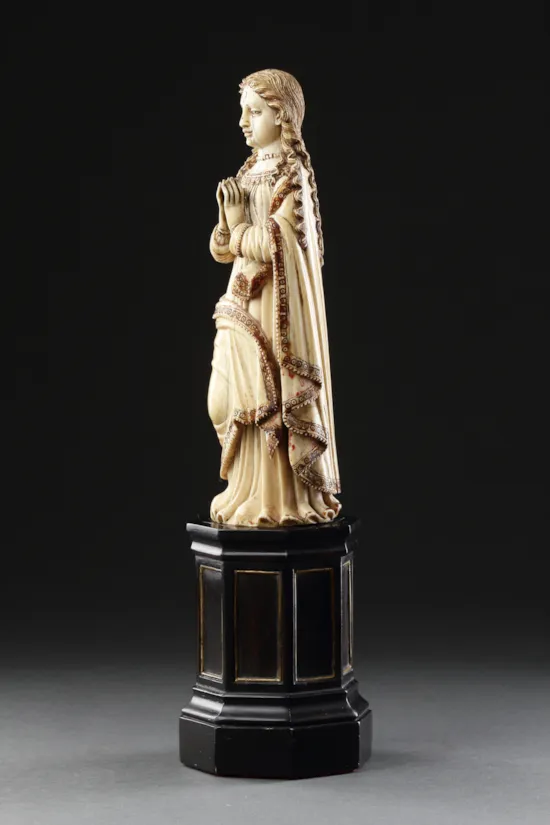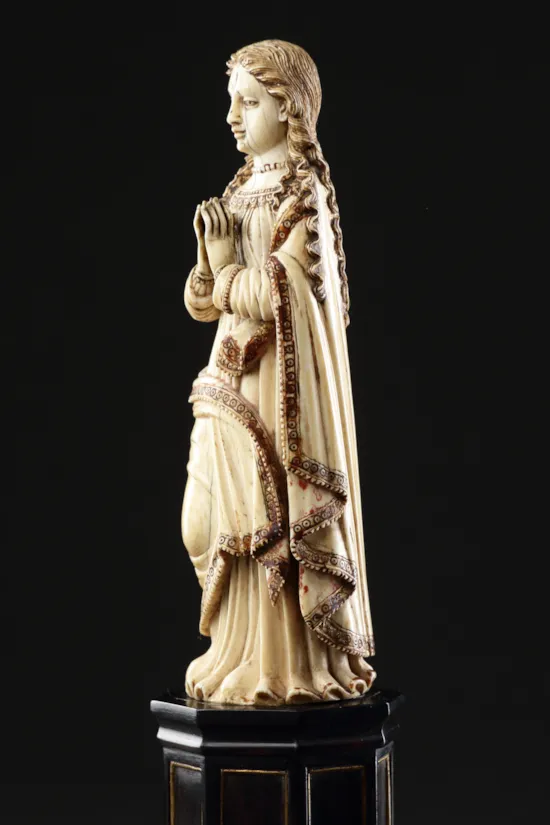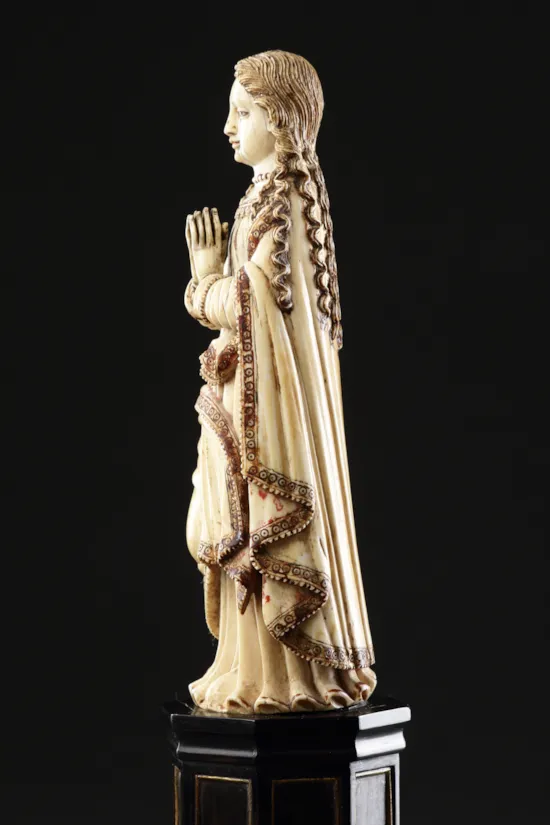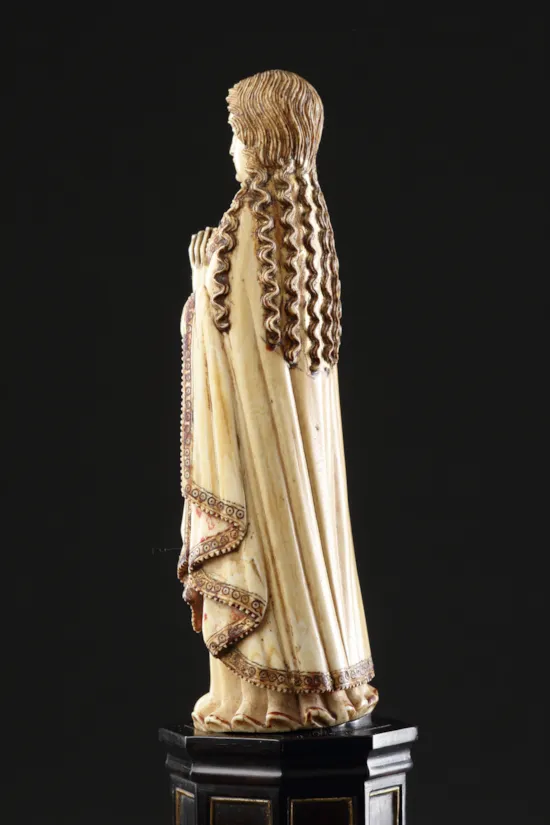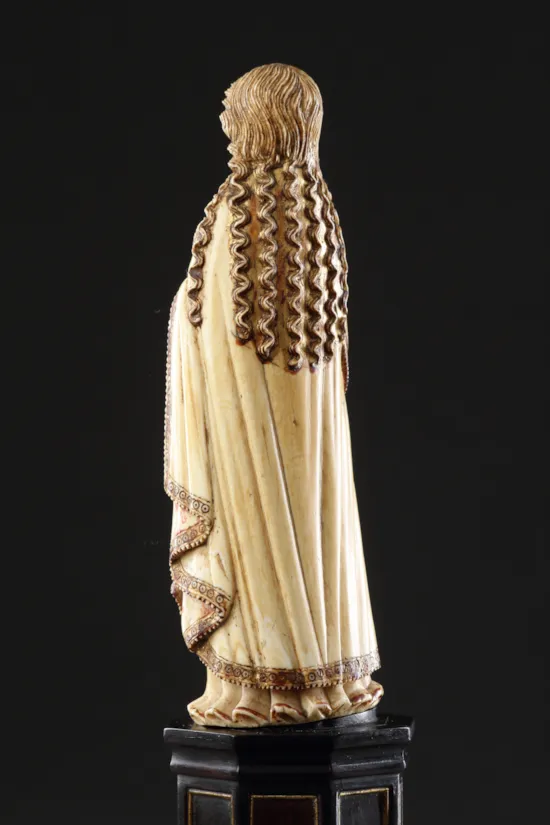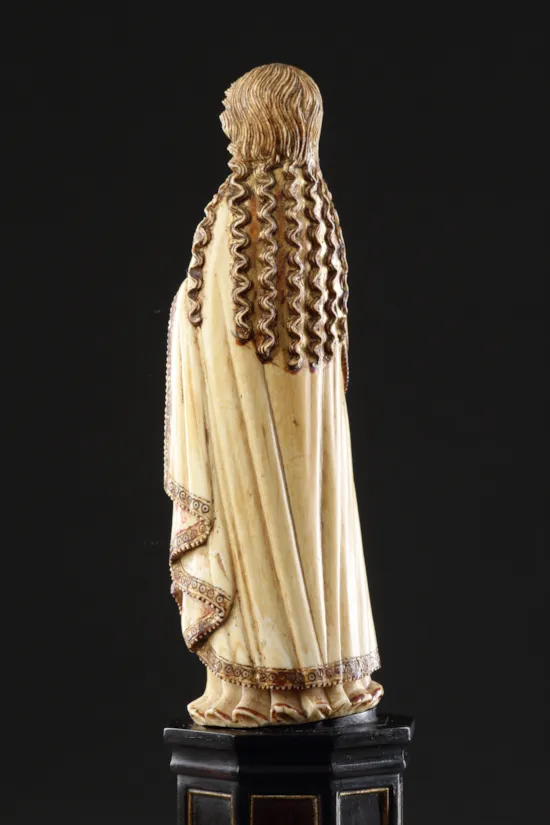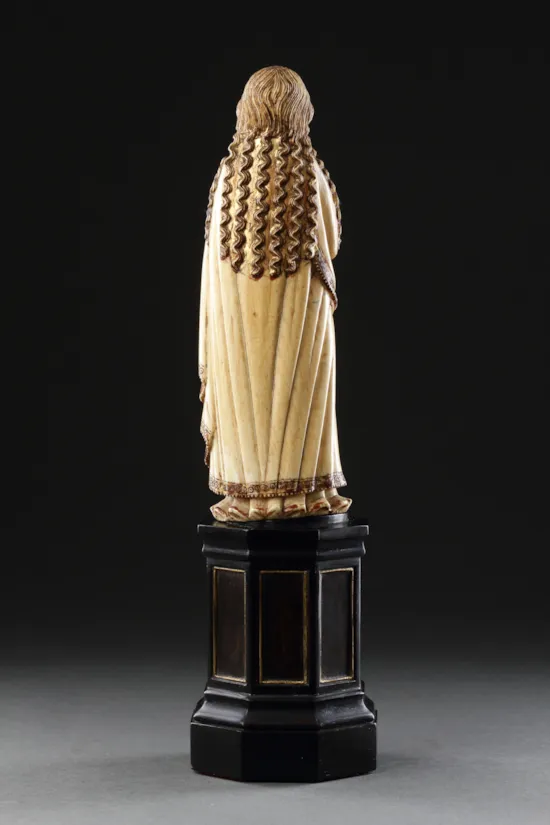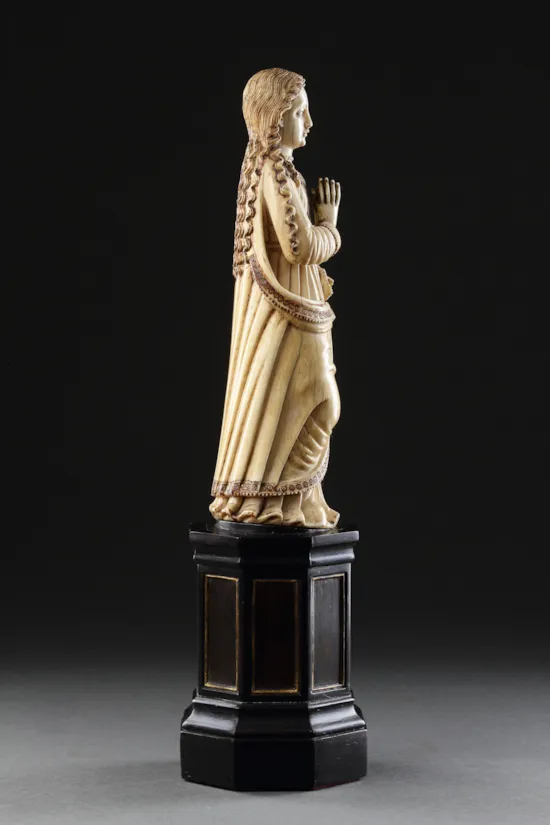Finely Carved Indo-Portuguese Ivory Madonna with Hands Clasped in Prayer
A Finely Carved Indo-Portuguese Ivory Madonna with Hands Clasped in Prayer
Her Flowing Drapery Decorated with Original Polychrome to the Border
A bead necklace adorning her neck and long flowing braided hair falling down her back with original gilt decoration
Raised upon a new ebonised octagonal base
17th Century
Size: 19.5cm high - 7¾ ins high / 30.5cm high - 12 ins high (with base)
Her Flowing Drapery Decorated with Original Polychrome to the Border
A bead necklace adorning her neck and long flowing braided hair falling down her back with original gilt decoration
Raised upon a new ebonised octagonal base
17th Century
Size: 19.5cm high - 7¾ ins high / 30.5cm high - 12 ins high (with base)
A Finely Carved Indo-Portuguese Ivory Madonna with Hands Clasped in Prayer
Her Flowing Drapery Decorated with Original Polychrome to the Border
A bead necklace adorning her neck and long flowing braided hair falling down her back with original gilt decoration
Raised upon a new ebonised octagonal base
17th Century
Size: 19.5cm high - 7¾ ins high / 30.5cm high - 12 ins high (with base)
Her Flowing Drapery Decorated with Original Polychrome to the Border
A bead necklace adorning her neck and long flowing braided hair falling down her back with original gilt decoration
Raised upon a new ebonised octagonal base
17th Century
Size: 19.5cm high - 7¾ ins high / 30.5cm high - 12 ins high (with base)
After the fall of Sri Lanka to the British in 1657 the Portuguese departed and established a larger trading presence in Goa. The town had always been a magnet for craftsmen from all over India even before the Sinhalese came to continue in the service of the Portuguese. The production of Christian ivories continued as it had done before in Sri Lanka, but now Goa became a major producer of luxury goods and a commercial centre. With the evolution of sea routes it developed into a worldwide trading hub with large numbers of European merchants Spanish, French, German and Flemish, beside the Portuguese settling there.
The presence of the body of Saint Frances Xavier in Goa since 1554 and the cult developed by the Jesuits surrounding it, established an important market for the Catholic Missions in religious imagery.
Carved in the Portuguese colony of Goa by a Goanese artist under Portuguese commission, these ivories epitomise the interweaving of European, Indian and Asian decorative and figurative traditions. Missionary institutions were major buyers of religious works of art from local workshops, and the images produced reflect the main interests of the Jesuits and Franciscans and the saints they used in their propagandist and teaching roles. Missionary work had been established in Goa in the late 16th century. The wealth obtained through trade with the East, especially in spices and silks, had generated the opportunity to spread the Catholic faith along the trade routes. Religious figures such as this were produced to both help convert the local population and to export back to Europe. Much of the ivory used in their carving came from another Portuguese colony, Mozambique in East Africa, where its export was strictly controlled.
The presence of the body of Saint Frances Xavier in Goa since 1554 and the cult developed by the Jesuits surrounding it, established an important market for the Catholic Missions in religious imagery.
Carved in the Portuguese colony of Goa by a Goanese artist under Portuguese commission, these ivories epitomise the interweaving of European, Indian and Asian decorative and figurative traditions. Missionary institutions were major buyers of religious works of art from local workshops, and the images produced reflect the main interests of the Jesuits and Franciscans and the saints they used in their propagandist and teaching roles. Missionary work had been established in Goa in the late 16th century. The wealth obtained through trade with the East, especially in spices and silks, had generated the opportunity to spread the Catholic faith along the trade routes. Religious figures such as this were produced to both help convert the local population and to export back to Europe. Much of the ivory used in their carving came from another Portuguese colony, Mozambique in East Africa, where its export was strictly controlled.
See: For an example probably by the same hand, Virgin of the Immaculate Conception. India, Goa, late 17th Century. Painted and Gilded Ivory. Museu Nacional de Arte Antiga, Lisbon (2496 Esc) illustrated in Christianity in Asia Sacred Art and Visual Splendour, Asian Civilisations Musuem, Singapore, exhibition catalogue, 2016, pg. 109, fig 12
Finely Carved Indo-Portuguese Ivory Madonna with Hands Clasped in Prayer
